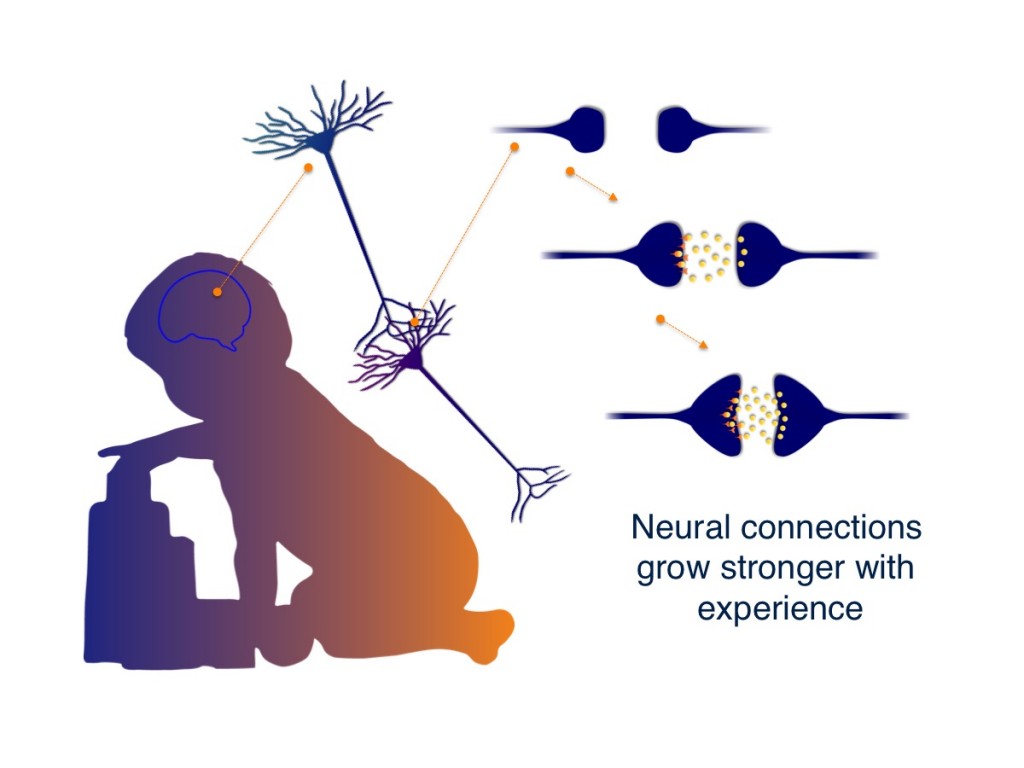
Over the course of childhood, we build our brains. This massive construction project is the result of both our biology and our experiences. Powerful biological processes provide the foundation, the raw materials and the basic building plan. But our experiences shape who we are.
Our biology provides the neurons, the mechanisms to connect them, and defines the structure of the brain. Our brains look very similar to the naked eye. Yet, at the microscopic level, our experiences influence how our brains are wired. Our experiences guide which neural connections form, become more efficient, and which will be removed. The more frequent an experience – whether positive or negative – the stronger those connections grow. Sensory input and interactions with people contribute to the intricate pattern of neural connections.
Biological factors guide the rate and extent of how experiences are processed for each individual child. But our experiences can shape how the biological factors are expressed. This combination of biology and experience contributes to all aspects of a child’s development.
-
- Axon
- output fiber of a neuron
- Cell body
- the neuron's processing center
- Dendrites
- input fibers of a neuron
- Magnetoencephalography (MEG)
- a non-invasive brain imaging technique used to determine which regions of the brain are active
- Neurons
- cells located in the brain and throughout the body that are specialized to communicate messages
- Pruning
- the process of removing excess synapses
- Sensitive period
- a time in development when the brain is especially ready to learn a skill
- Synapse
- connection point between neurons